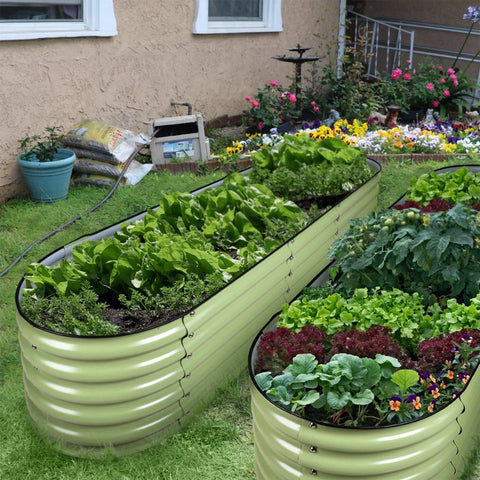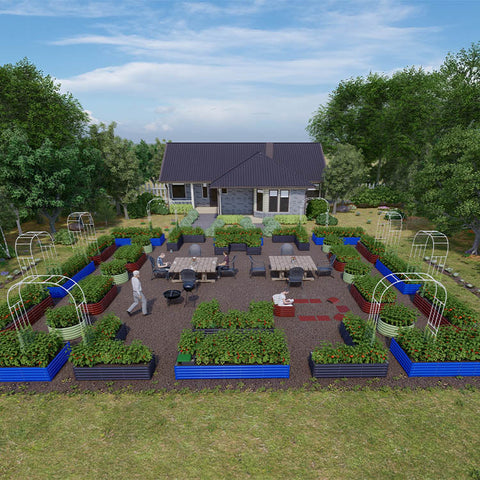Tips from Olle garden beds:A Guide to Creating Community-Raised Bed Gardens
In a world that often feels increasingly disconnected, community gardens offer a sanctuary where individuals can come together, share knowledge, and cultivate not just plants but also strong bonds. One of the most popular forms of community gardens is the raised bed garden. In this article, we'll explore the step-by-step process of creating community-raised bed gardens and highlight the numerous benefits they bring to neighborhoods and individuals alike.
Chapter 1: The Benefits of Community-Raised Bed Gardens
Before diving into the practical steps of creating a community raised bed garden, let's first explore the many advantages it offers:
Community Bonding: These gardens foster a sense of community, as they require teamwork and cooperation. Neighbors come together to plant, tend, and harvest the garden, strengthening their connections.
Accessible Gardening: Raised beds are more accessible for people with mobility issues, making gardening an inclusive activity for all ages and abilities.
Space Efficiency: Raised beds maximize space, making them ideal for urban areas or places with limited gardening space.
Increased Productivity: Raised beds provide better soil quality and drainage, resulting in healthier plants and higher yields.
Educational Opportunities: Community gardens are excellent educational resources, teaching members about gardening, nutrition, and environmental sustainability.
Chapter 2: Planning Your Community-Raised Bed Garden
Creating a successful community raised bed garden starts with careful planning:
Select a Suitable Location: Choose an open, sunny area with access to water. Ensure the land is flat and free from obstacles.
Engage the Community: Gauge interest and gather potential participants. Hold community meetings to discuss the project and form a dedicated garden committee.
Garden Design: Decide on the garden's layout, the number and size of raised beds, and the pathways between them. Take the community's needs and preferences into account.

Chapter 3: Building Your Raised Beds
It's time to put your hands to work and roll up your sleeves.
Materials Needed: Gather the necessary materials, including untreated lumber, screws, a saw, measuring tape, and a level.
Bed Construction: Build the raised beds according to your predetermined design. Ensure they are sturdy, level, and well-secured.
Soil Selection: Fill the beds with a rich, well-draining soil mix. Consider conducting soil tests to determine the soil's nutrient content and pH level.
Chapter 4: Planting and Maintenance
With your raised beds in place, it's time to bring your garden to life:
Plant Selection: Choose a variety of vegetables, herbs, and flowers that are well-suited to your region and the preferences of your community.
Planting: Follow the recommended spacing and planting depth for each crop. Consider companion planting to maximize productivity and deter pests.
Maintenance: Create a watering schedule, establish a weeding routine, and monitor for pests and diseases. Encourage community members to take turns caring for the garden.
Chapter 5: Community Engagement
A thriving community-raised bed garden relies on active participation and engagement:
Workshops and Events: Organize educational workshops, garden tours, and seasonal celebrations to keep community members engaged and informed.
Harvest and Sharing: Encourage members to share the harvest, either among themselves or with local food banks and charities.

Record Keeping: Maintain a garden journal to track planting dates, yields, and any challenges faced. This helps with planning future seasons.
Chapter 6: Sustainability and Longevity
To ensure your community raised bed garden stands the test of time:
Composting: Set up a composting system to recycle organic matter from the garden and reduce waste.
Community Involvement: Continuously involve the community in decision-making and maintenance to maintain interest and commitment.
Fundraising: Consider organizing fundraisers or seeking grants to cover maintenance costs and expand the garden if necessary.
Creating a community-raised bed garden is not just about growing plants; it's about cultivating connections, promoting sustainability, and enhancing the quality of life in your neighborhood. By following the steps outlined in this guide and fostering a sense of community, you can create a thriving garden that brings people together and yields bountiful harvests for years to come. So, roll up your sleeves, gather your neighbors, and start planting the seeds of a stronger, healthier community today.
